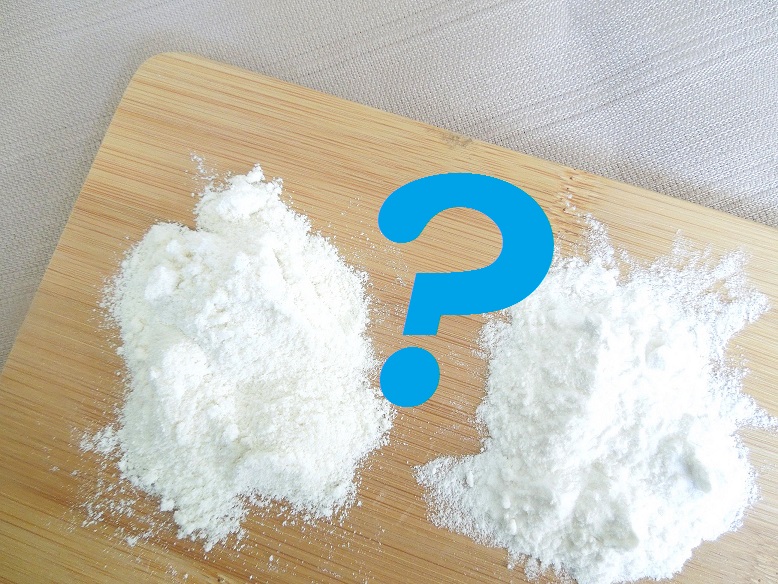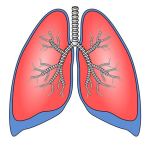Peripheral Neuropathy Symptoms
and how to manage the pain

by Ray Klein
June 8, 2012
Any updates will be included at the end of the page
My peripheral neuropathy symptoms started in 2001 shortly after an extremely stressful personal event. The symptoms started with my feet falling asleep (pins and needles) when I would work out in a gym. Usually by the time I got home my feet would wake back up and the pain would subside. This continued for a few months until after one workout my feet never awoke again. The peripheral neuropathy symptoms gradually spread over most of my body by the end of 2005. Over 90% of my body was in such excruciating pain that I could not see how I would survive another day.
Peripheral neuropathy symptoms can consist of pain, sometimes combined with weakness. The pain often starts gradually in the extremities and works its way up your legs and arms.
Pain symptoms can be felt as:
- numbness
- pins and needles
- tingling
- burning sensation
- sharp pain
- electric shock
Peripheral neuropathy symptoms of weakness can appear as:
- muscle weakness and/or
- some loss of coordination
- exhaustion (as the neuropathy progresses)
The loss of coordination is often due to a loss of strength that leads to less stability – you cannot stand on one foot, or cannot stand on the balls of your feet, or you cannot seem to hit the nail when swinging a hammer.
Because the feet are the farthest from the spinal cord, the nerves in the feet are usually what are affected first. It can start with the feet just falling asleep temporarily, then it progress to your feet staying asleep for an extended period of time, and finally the bottoms of the feet never waking up. As of this moment it has been over 11 years since the bottom of my feet have woken up, since I have been without the relentless feeling of pins and needles.
My peripheral neuropathy symptoms are typical of a biological cause instead of a physical cause. Biological meaning the peripheral neuropathy symptoms were brought on by chemical exposure, diseases, dietary deficiencies, inherited peripheral neuropathy, or other causes that are not trauma related.
Biological peripheral neuropathy symptoms almost always start slow, as numbness in the feet or hands, and gradually work their way up the extremities. The symptoms are also normally bilateral, meaning they feel almost the same in both feet or in both hands. The gradual nature of the problem sometimes makes it so that a person is not aware of how serious the problem really is.
For athletes or former athletes like myself, we tend to shrug off the pain and continue to move on. Only when the peripheral neuropathy symptoms start getting serious, climbing up the calves, do we seek medical assistance. But then a lot of damage has already been done. If the cause can be detected or some changes can occur in our life, peripheral nerves can grow back and some of the damage may be repaired. This can relieve the pain greatly, but to date I have not yet read a single study proving that a peripheral neuropathy can be cured completely, or that all the damage caused by it was ever completely repaired. Nevertheless, the sooner the treatment and lifestyle changes start, the better the chances are to reverse the peripheral neuropathy symptoms.
For more information on the physical and biological causes of peripheral neuropathy go to The Causes of Peripheral Neuropathy.
PERIPHERAL NEUROPATHY TREATMENT
Peripheral neuropathy treatment consists of treating the cause of the neuropathy. While for the 50% who have the cause diagnosed, this can offer some temporary relief, it is not very reassuring for the rest of us whose cause was never found.
I say “temporary relief” because many biological causes of peripheral neuropathy symptoms are incurable, and as such, are lifelong battles. Once the doctors have done all they can to address the cause, they move on to symptomatic treatment. What most of the doctors miss is the role that good nutrition plays in the proper functioning of the body’s own repair systems. Namely, they miss the importance of maintaining your glutathione level at its optimum.
The best peripheral neuropathy treatment attacks the problem at the source. The problem is defining the source. Our paradigms generally state the immediate source as the thing to be attacked. By attacking diabetes, for example, and bringing it under control, most of us conclude that we are attacking the source and providing the best peripheral neuropathy treatment. This is where we have to shift our paradigm and focus not on the disease itself per se, but on the actual source of the disease.
What is the source of the disease should then be the next logical question. The source of all disease is the same – the inability of our body to effectively control something that is going on in our bodies. In most cases, but not all, it is a failure of the immune system, detoxification system and/or repair system. The best peripheral neuropathy treatment is then to maintain these three major systems at their optimum performance.
At the heart of the immune system, detoxification system and repair system is available glutathione. Unfortunately, maintaining available glutathione levels above what is needed by each of these three systems does not equate to these three systems operating at optimum performance. But having low glutathione does directly equate to the less than optimum performance of these three systems. As glutathione availability drops, so does the performance of your immune system, detoxification system and repair system.
What I have found is that by attacking my peripheral neuropathy symptoms on the base level, doing everything I can to maintain as high a glutathione level as possible, as safely as possible, and attacking it with natural remedies on the symptomatic level (for example, consuming concentrated tart cheery juice every night for natural nerve pain relief) I have come up with the best peripheral neuropathy treatment for allowing me to continue living. Living – first of all being alive, then meaning engaging with the world around me - loving my wife and being loved by her, continuing working as a professional engineer, playing with my children, doing things, going places and just experiencing life. It is the year 2012. According to the medical prognosis over six years ago, I was highly unlikely to be writing this now.
Being blessed, a way to raise my glutathione was introduced to me at the time when the pain was unbearable and my neurologist could not help me anymore. My new regimen brought the severe pain under enough control to start the research that you can find on this web-site and that continues to this day. Keep looking and find the best peripheral neuropathy treatment for yourself, so that you too can continue living.
HOW TO MANAGE THE PAIN OF PERIPHERAL NEUROPATHY
The pain from a peripheral neuropathy is not like most other pains that we experience in our life. This pain is persistent - once fully developed, the pain from peripheral neuropathy symptoms is 24 hours a day 365 days a year for the rest of our life.
How can the pain that never goes away be managed? Several things need to be discussed when it comes to how to manage the pain of peripheral neuropathy symptoms, because approaching the problem from only one direction is NOT effective.
At a minimum we have to approach the problem from:
- mental awareness
- maintaining your immune health
- maintaining the environment you live in
Another option, not discussed here, is painkillers. To me drugs mean a shorter life, clouded mind, so that I cannot continue working, and inability to LIVE - drugs that do this are not an option.
Mental awareness is the first and foremost defense we have when dealing with chronic pain. Mental awareness is to realize and to continually remind yourself that pain does not exist. I know you feel it, so it must be real, right? Wrong. Pain is only an electrical impulse that travels up the central nervous system to the brain. The brain registers the signal and tells you that there is pain. In most instances feeling pain is a very good thing to keep us safe. We tend to pay close attention to something that is painful and we take action to correct what is causing it.
With the pain from peripheral neuropathy symptoms, the signal we are receiving is more detrimental than helpful. Paying attention to the pain from peripheral neuropathy symptoms will not make them go away. So, we must realize that it is only an electrical impulse and we have to train our minds to ignore this signal to the greatest extent possible.
By accepting that the pain is only an electrical impulse to our brain we greatly reduce the effect of the pain on our system – keep our blood pressure from elevating, reduce the amount of adrenalin being constantly released, and keep our mind from being overcome by the dread associated with pain. In this way we limit the negative side effects that come with our bodies’ reaction to pain. While gurus and spiritualists may say that this is the only real solution, for most of us, myself included, this is in no way the only solution, but in the long term it is a vital part of how to manage the pain of peripheral neuropathy.
Maintaining your immune health is essential in managing long-term chronic pain. This entire web-site is about immune health and the crucial role that glutathione plays in your immune system. The regimen that I follow and that is laid out below is all about optimizing my immune health, so that my body can deal with the pain of peripheral neuropathy in the best possible way. Some of the key ideas for strengthening my immune health are:
- raising glutathione
- avoiding the things that deplete glutathione
- reducing the stress in my life
- quality nutrition
- light to moderate exercise
Environment that you live in is another key element in the management of the peripheral neuropathy pain. It is actually closely related to maintaining immune health. By environment I mean what life is like around you (city or country which affects the stress and environmental pollution levels), what your daily routine is (activity level, eating habits, etc.) and what physical items you surround yourself with that might be helpful. There are many factors to talk about here, so to keep it short, I will simply tell you what I do:
- sleep on a high quality bed that minimizes pressure points
- wear loose fitting tennis shoes with padded insoles
- try to lay flat on my back for several hours a day
- only engage in light exercise, preferably in a pool, but not having this luxury, mostly I walk
- eat food that is organic, pesticide and antibiotic free, as much as possible
- minimize exposure to chemicals in cleaning and personal care products
MY “PERIPHERAL NEUROPATHY ATTACK REGIMEN”
This supplemental regimen has raised my glutathione and helps maintain its optimal levels. It brought my severe peripheral neuropathy under control and resulted in increased energy levels, and in the pain staying mostly in the bottom of my feet now, instead of the whole body.
Please discuss all supplements with your doctor before starting any supplementation regimen.
MORNING:
Undenatured whey protein provides bioavailable cysteine and glutamylcysteine precursors, as well as glycine and glutamate for the synthesis of glutathione in the body. I consider this to be the most important supplement. Dose - 20 grams in the morning (60 grams total daily).
Vitamin & mineral support. Dose - 1 capsule.
Methylated B-complex - glutathione cofactor B vitamins in activated, methylated form. Dose - 1 capsule.
Vitamin D for immune function support. Dose - 1 softgel, 5,000 IU (such a high dose was recommended by my neurologist).
Glutathione cofactor. Dose - 1 capsule (400 IU).
Glutathione cofactor, powerful antioxidant; alpha lipoic acid is clinically proven to optimize glutathione levels. Dose - 2 capsules (500 mg).
Antioxidant blend of acai, goji, noni, mangosteen, camu camu, aloe and maqui juices for additional antioxidant support. Dose - 1 oz.
AFTERNOON:
Undenatured whey protein concentrate -
20 grams. This is basically my lunch at work (plus a fresh salad).
EVENING (before bedtime):
Undenatured whey protein concentrate -
20 grams.
Tart cherry juice concentrate - natural source of melatonin for better sleep, natural pain relief, powerful antioxidant. Temporary improves glutathione levels. Dose - 1 oz.
Valerian root -
Natural stress relief. Dose according to the label.
Temporary neuropathy pain relief which helps to have more restful sleep. Topical on the feet according to instructions.
Disclosure: The links above on the left are affiliate links to the products that I use daily. Should you choose to purchase any of them through these links we will receive a small commission from the sale. Thank you for supporting our web-site.
Dietary changes:
I increased fruits and vegetables in my diet, as well as eat a much greater variety of them, in salads, smoothies and juicing, trying to buy organic produce whenever possible. I introduced organic raw milk into my diet and switched almost completely to organic grass-fed meat, free range eggs and poultry.
I eliminated:
- all processed sugar
- bleached refined flour
- preservatives
- artificial dyes
- artificial flavors
- artificial sweeteners
- canned and packaged foods
- all sodas, sports drinks and other commercial drinks
- hydrogenated vegetable oils
- processed meats (hotdogs, sausages, bologna, etc.)
- and foods with any kind of unnecessary additives
June 2014 Update: I lost 45 lbs. over the past 12 months. I went from weighing 220 lbs. to 175 lbs. I was able to achieve this by eliminating breads, pasta and starches from my diet. Less weight translated into less pressure on my feet while walking or standing - neuropathy pain reduced slightly with weight loss.
If you have any questions about my regimen or about dealing with peripheral neuropathy, you can contact me here:
We will not share your name or e-mail with anyone.
Further reading:
What are glutathione precursors?
What are glutathione cofactors?
Undenatured whey protein as a means of raising glutathione
Cysteine – the most important of glutathione precursors
Can taking glutathione supplements raise glutathione levels?




